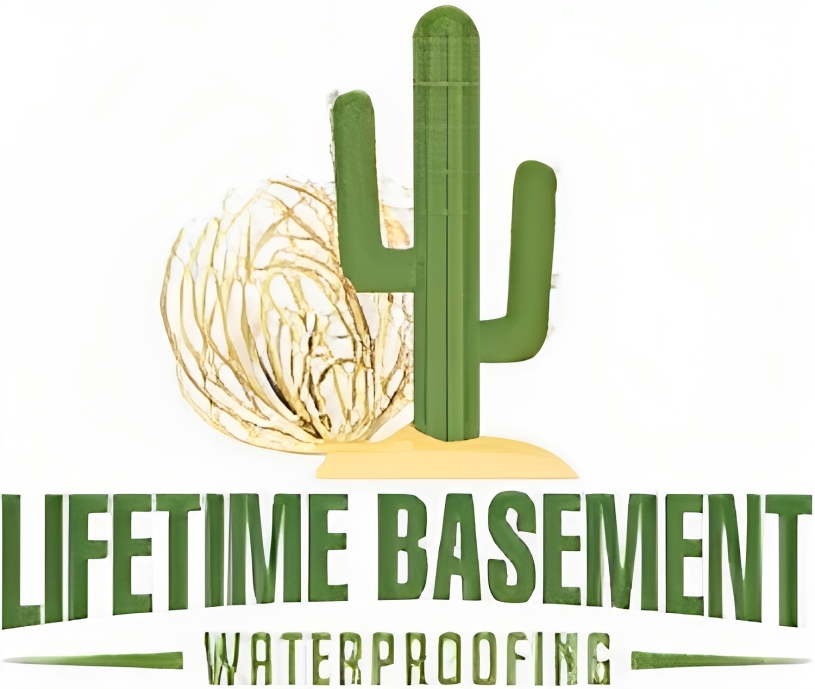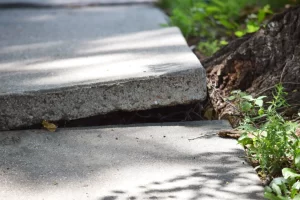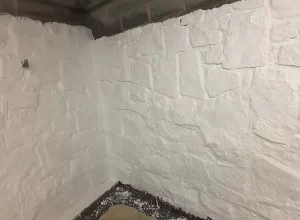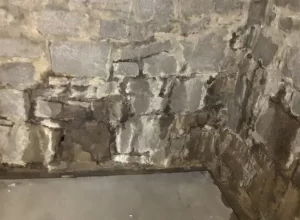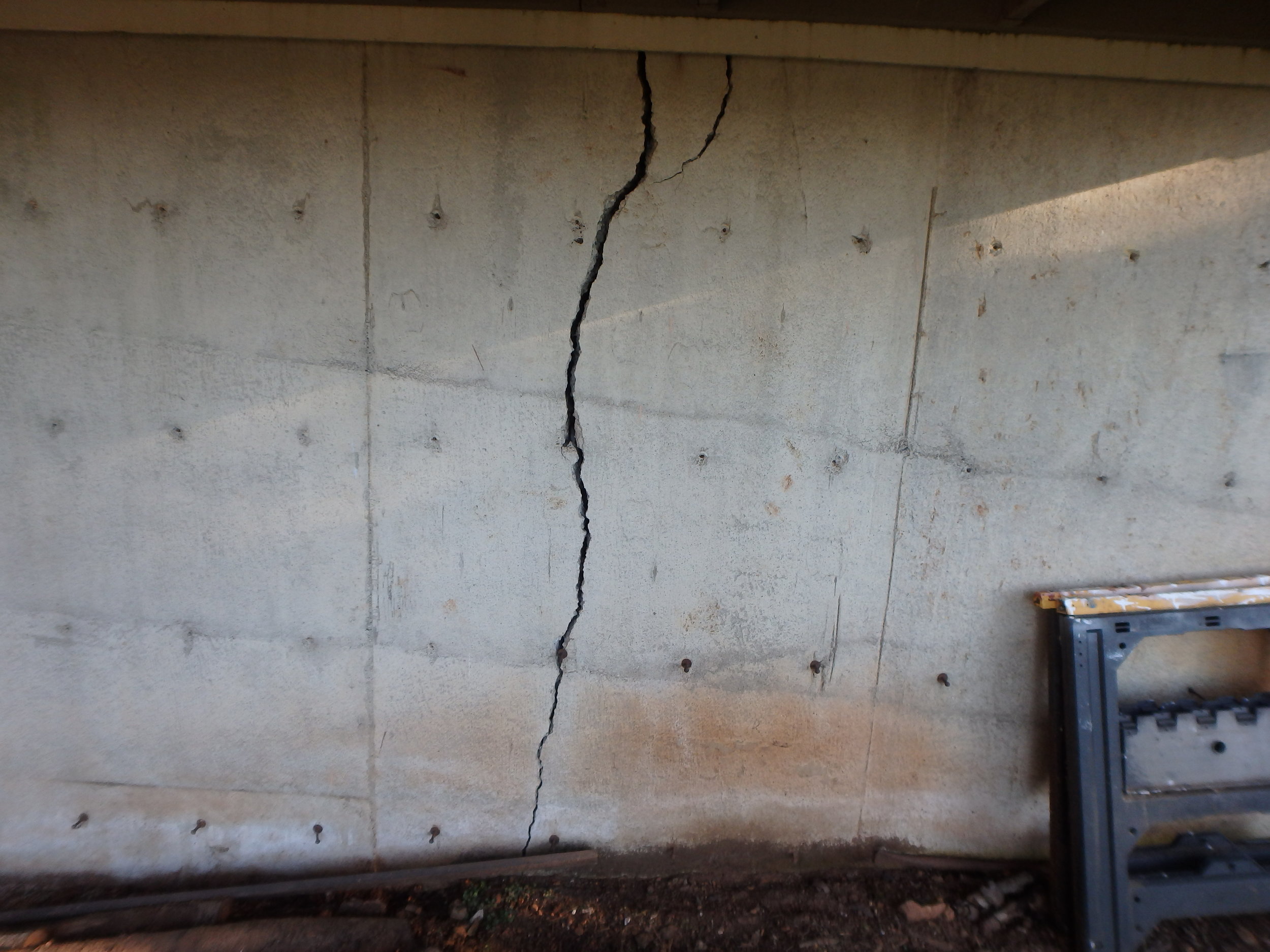
To identify vertical foundation cracks effectively, begin by examining the outer walls for cracks wider than a quarter inch, especially if they show a stair-step pattern or bulging. Inside, be on the lookout for cracks running from the floor to the ceiling and any walls that are leaning. Measure crack width, length, and depth regularly to monitor changes. Seek expert guidance for cracks wider than 1/4 inch or displaying rapid growth. Addressing cracks promptly is key to preventing further damage and instability, ensuring your property remains safe and secure.
Key Takeaways
- Look for vertical cracks in outer walls, especially those wider than a quarter inch.
- Check for stair-step patterns or bulging walls indicating foundation issues.
- Use a level to detect leaning walls or sloping floors inside the property.
- Monitor crack dimensions regularly and seek professional assessment for significant changes.
- Address cracks promptly with epoxy injections for minor issues; consult a pro for extensive cracks.
Exterior Inspection
When inspecting the exterior of your home for vertical foundation cracks, start by examining the outer walls for any visible signs of damage. Walk around your property and look for vertical cracks that may appear like stair-step patterns in the brickwork or concrete. These cracks are a common indication of foundation settlement or shifting.
Pay close attention to any cracks wider than a quarter of an inch, as these could be a sign of a more serious issue with your foundation. Look out for cracks that aren’t only wider but also deeper, as they could signal structural problems that require immediate attention. Additionally, keep an eye out for any bulging or bowing in the walls, as this could also be a sign of foundation movement.
Check for any gaps between the foundation and the rest of the house, especially around doors and windows. These gaps could indicate that the foundation is no longer supporting the structure properly. Also, inspect the foundation for any signs of water damage or staining, as this could be a clue that water is seeping into the foundation and causing cracks.
Interior Examination
To inspect the interior for signs of vertical foundation cracks, carefully examine the walls and floors for any visible damage or displacement. Look for the following indicators:
- Crack Patterns: Vertical cracks running from the floor to the ceiling are often a clear sign of foundation settlement. These cracks may be wider at one end than the other, indicating a potential structural issue.
- Wall Misalignment: Check for any walls that appear to be leaning or tilting, as this could suggest a problem with the foundation. Use a level to determine if the walls are perfectly vertical.
- Floor Irregularities: Uneven or sloping floors can be a result of foundation movement. Place a ball on the floor and see if it rolls in a particular direction, which can indicate a slope caused by foundation issues.
Measurement and Monitoring
Let’s start by measuring and monitoring any vertical foundation cracks to track their progression over time. Begin by measuring the crack’s width, length, and depth using a ruler or tape measure. Note down these measurements and mark the crack’s endpoints to easily identify any changes.
Regularly check the crack’s dimensions every few months to monitor any alterations. Take note of any significant changes in size, such as rapid widening or deepening, as these could indicate a more serious issue with the foundation. If you notice any sudden shifts, it’s important to seek professional help promptly.
In addition to measuring, keep an eye on the crack’s surroundings. Look for signs of moisture, such as dampness or mold growth, as this could suggest water infiltration through the crack. Monitoring any moisture-related changes can help you address potential water damage issues early on.
Consider using a crack monitoring device, such as adhesive crack gauges, to accurately measure any movement in the crack over time. These devices can provide quantitative data on any shifts in the crack, aiding in the assessment of the foundation’s stability.
Professional Assessment
Wondering how to determine if a vertical foundation crack requires a professional assessment? Vertical cracks in your foundation can be a cause for concern, and it’s crucial to know when to seek expert advice. Here are some signs that indicate you should consider getting a professional assessment:
- Unusual Width: If the crack is wider than 1/4 inch, it may be a sign of a more serious structural issue that necessitates professional evaluation.
- Sudden Appearance: If a vertical crack suddenly emerges or grows rapidly, it could indicate ongoing movement in the foundation that needs immediate attention.
- Accompanied by Other Symptoms: If the crack is accompanied by other signs such as sticking doors or windows, sloping floors, or water leakage, it’s advisable to have a professional assess the situation to determine the underlying cause.
When in doubt, it’s always better to err on the side of caution and consult the foundation repair professionals at Lifetime Basement Waterproofing. A trained foundation expert can accurately assess the crack, identify any underlying issues, and recommend the best course of action to address the problem promptly and effectively.
Addressing Cracks Promptly
Don’t delay addressing vertical foundation cracks promptly to prevent potential structural issues from worsening. When you notice vertical cracks in your foundation, it’s essential to take swift action. Ignoring these cracks can lead to more significant problems down the line, such as water seepage, mold growth, or even structural instability. By addressing the issue promptly, you can save yourself time, money, and stress in the long run.
The first step in addressing vertical foundation cracks is to determine the cause of the cracks. These cracks can be a result of various factors, including soil settlement, water damage, or poor construction. Once you’ve identified the root cause, you can then proceed with the appropriate repairs.
Depending on the severity of the cracks, you may be able to fix them yourself or need to hire a professional. For minor cracks, using epoxy injections or hydraulic cement can effectively seal the cracks and prevent them from spreading. However, for more extensive or structural cracks, it’s best to consult with a foundation repair specialist to assess the situation and recommend the most suitable solution.
Frequently Asked Questions
What Are the Common Causes of Vertical Foundation Cracks?
Vertical foundation cracks commonly occur due to soil settlement, poor construction practices, or excessive moisture. These factors can create pressure on the foundation, leading to cracks. Regular inspections and addressing drainage issues can help prevent them.
Are Vertical Foundation Cracks Always a Sign of Serious Structural Issues?
Vertical foundation cracks are not always indicative of severe structural problems. In some cases, they may be minor and easily repairable. However, it’s essential to assess each crack carefully to determine the extent of any potential issues.
Can Vertical Foundation Cracks Be Repaired Without Professional Help?
You can repair vertical foundation cracks without professional help if they’re small. Use epoxy injections or sealants after proper preparation. Larger cracks or those indicating structural issues need expert evaluation and repair to guarantee safety.
How Can I Prevent Vertical Foundation Cracks From Forming in the Future?
To prevent vertical foundation cracks, guarantee proper drainage, maintain consistent moisture levels around the foundation, and address any tree roots close to your home. Regularly inspect for signs of settling or shifting and promptly address any issues.
Are There Any Warning Signs That Indicate a Vertical Foundation Crack May Be Worsening Over Time?
If you notice widening vertical foundation cracks, especially accompanied by doors or windows sticking or uneven floors, these are warning signs that the crack may be worsening over time. It’s crucial to address this promptly.
Conclusion
Lifetime Basement Waterproofing has been Atlanta’s premier basement waterproofing company for over 30 years. We’re a family-owned and operated company that specializes in basement waterproofing in metro Atlanta.
Additionally, we provide many other services at an expert level. These include crawlspace encapsulation, exterior foundation waterproofing, foundation crack repair, and drainage strategy for French drains.
You can count on Lifetime Basement Waterproofing for your wet basement repair needs.
